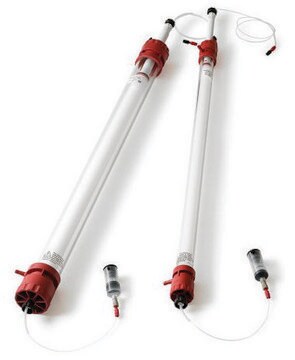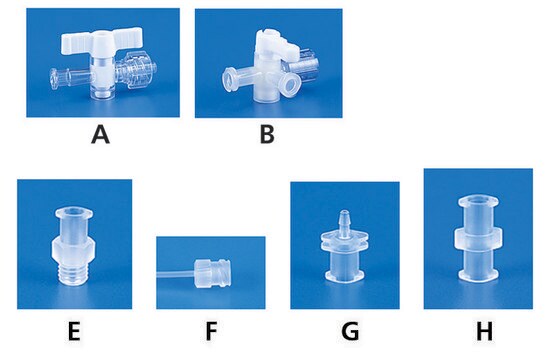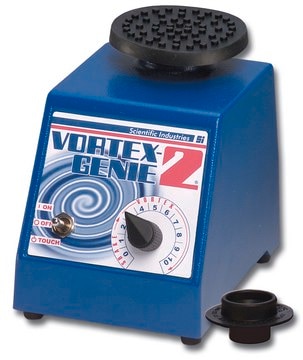C3919
Colonnes de chromatographie liquide
Luer Lock, Non-jacketed, I.D. × L 1.0 cm × 20 cm, bed volume 16 mL
Se connecterpour consulter vos tarifs contractuels et ceux de votre entreprise/organisme
About This Item
Code UNSPSC :
12000000
eCl@ss :
32060201
Nomenclature NACRES :
SB.52
Produits recommandés
Qualité
for chromatography
Technique(s)
LPLC: suitable
D.I. × L
1.0 cm × 20 cm
Volume du lit
16 mL
Vous recherchez des produits similaires ? Visite Guide de comparaison des produits
Description générale
All of the columns listed below are constructed of borosilicate glass and are rated at a maximum pressure of 15psi (1 bar). Five configurations are available:
A - Luer-Lock, Non Jacketed: Fixed polypropylene end caps, polyethylene bed supports, Luer-Lock inlet and outlet fittings.
B - Luer-Lock, Jacketed: Same as A (above), with a borosilicate glass jacket surrounding the column body for temperature control.
C - Open-ended: Fixed polypropylene ends (outside of tube only), without jacket or end fittings. Requires 2 flow adapters.
D - PTFE, non-jacketed: Threaded ends, removable PTFE fittings with shielded O-ring seals, 20 μm polyethylene bed supports, and 1/4-28 threaded tubing connections. Solvents contact only PTFE and borosilicate glass.
E - PTFE, jacketed: Same as D (above), with an acrylic jacket surrounding the column body for temperature control.
A - Luer-Lock, Non Jacketed: Fixed polypropylene end caps, polyethylene bed supports, Luer-Lock inlet and outlet fittings.
B - Luer-Lock, Jacketed: Same as A (above), with a borosilicate glass jacket surrounding the column body for temperature control.
C - Open-ended: Fixed polypropylene ends (outside of tube only), without jacket or end fittings. Requires 2 flow adapters.
D - PTFE, non-jacketed: Threaded ends, removable PTFE fittings with shielded O-ring seals, 20 μm polyethylene bed supports, and 1/4-28 threaded tubing connections. Solvents contact only PTFE and borosilicate glass.
E - PTFE, jacketed: Same as D (above), with an acrylic jacket surrounding the column body for temperature control.
Faites votre choix parmi les versions les plus récentes :
Certificats d'analyse (COA)
Lot/Batch Number
It looks like we've run into a problem, but you can still download Certificates of Analysis from our Documents section.
Si vous avez besoin d'assistance, veuillez contacter Service Clients
Déjà en possession de ce produit ?
Retrouvez la documentation relative aux produits que vous avez récemment achetés dans la Bibliothèque de documents.
Notre équipe de scientifiques dispose d'une expérience dans tous les secteurs de la recherche, notamment en sciences de la vie, science des matériaux, synthèse chimique, chromatographie, analyse et dans de nombreux autres domaines..
Contacter notre Service technique



